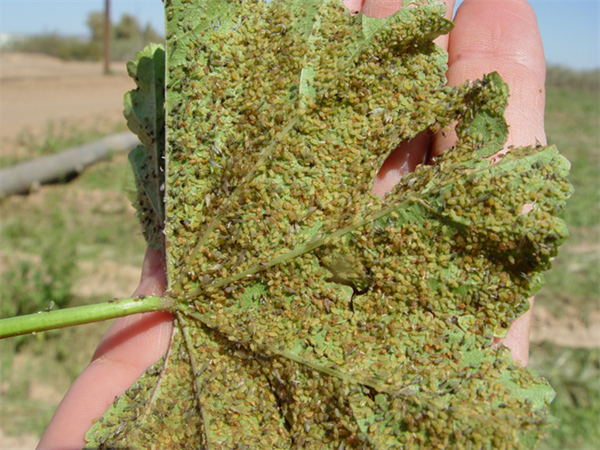Apr 3, 2024
Outline of Upper and Lower Basin Proposals for Colorado River Management
There have been ongoing negotiations for several years directed at developing the new Colorado River management guidelines that will go into place in 2026 when the 2007 interim guidelines expire.
The goal of negotiations among the seven U.S. Colorado River basin states has been to submit a single document proposing guidelines to the Bureau of Reclamation (BoR) within the U.S. Department of the Interior. However, the upper and lower basin state groups have been dealing with significant differences and were not able to come to a consensus agreement. As a result, the upper and lower basin delegations each submitted separate proposals to the BoR in early March.
Both proposals are under review by the BoR officials who have indicated that they will be working with the basin states in the next six months to develop a consensus draft proposal for post-2026 river management by the end of 2024.
To help review the differences between the two proposals, I have summarized the basic parameters in Tables 1 through 4 (Davis, 2024a and Hager, 2024a).
To help review the differences between the two proposals, I have summarized the basic parameters in Tables 1 through 4 (Davis, 2024a and Hager, 2024a).
Lower Basin Proposal Summary
Table 1. Outline of lower basin proposal for Colorado River water management based on reservoir levels of Lakes Powell and Mead.
|
Reservoir Levels (%)
|
Lower Basin Reductions (MAF/Year)*
|
Upper Basin Reductions (MAF/Year)
|
|
70
|
0
|
0
|
|
59-69
|
0-1.5**
|
0
|
|
39-58
|
1.5
|
0
|
|
≤ 38
|
X
|
X
|
Note:
*MAF = million acre-feet
**Up to 1.5 MAF/year reductions for the entire lower basin depending on the reservoir levels between 59-69%. Divisions of water reductions among the lower basin states is not specified.
X = 1.5-3.9 MAF/year total reductions for the total Colorado River system. The specific amounts of water reductions in each of the upper and lower basins with reservoir levels at 38% or less are not specified in the current lower basin proposal.
Table 2. Annual reductions in Colorado River water allocations for the lower basin states when the reservoir water levels are between 39-58% in both reservoirs, based on the lower basin proposal.
|
Lower Basin State
|
Reduction (acre-feet)
|
|
Arizona
|
760,000
|
|
California
|
440,000
|
|
Nevada
|
50,000
|
|
Mexico*
|
250,000
|
*Contingent upon Mexico’s agreement with the reductions.
Based on the lower basin proposal, reservoir levels at 38% of capacity and lower would result in reductions from 1.5 to 3.9 MAF/year, depending on the levels of water depletion in Lakes Powell and Mead. The exact splits in water reductions between the upper and lower basins in this range of reservoir depletion is not specified in the lower basin plan, at least based on the materials used for this review. Accordingly, the share of water reductions that Arizona and California would take are not specified either.
For reservoir levels of less than or equal to 38%, the cuts would gradually tighten until the reservoirs fall below 23% of capacity. At that point, all Colorado River basin states would have to take maximum collective reductions of 3.9 million acre-feet a year.
Upper Basin Proposal Summary
Table 3. Outline of reductions in water releases from Lake Mead based on the upper basin proposal.
|
% of Capacity
|
Release Reductions (MAF/year)*
|
|
90
|
0
|
|
70-90
|
0-1.5
|
|
20-70
|
1.5
|
|
≤ 20
|
1.5-3.9
|
*MAF = million acre-feet
Specifically for Lake Mead, the Upper basin states proposal includes points:
— If Mead is at least 90% full, the Lower Basin states would take no cuts in their supplies.
— If Mead is between 70% and 90% full, the Lower Basin states would lose up to 1.5 million acre-feet per year.
— If Mead is 20% to 70% full, Lower Basin states would lose 1.5 million acre feet a year.
— If Mead is 20% full or lower, Lower Basin states would have to take cuts of up to 2.4 million acre-feet on top of the 1.5 million they’re already taking.
For Lake Powell, the Upper Basin states proposed a series of shrinking water releases depending on the lake’s elevation:
— If Powell is 81% to 100% full, the lake will release anywhere from 8.1 to 9 million acre-feet of water annually to send to Lake Mead for use by Lower Basin states.
— If Powell stands anywhere from 20% of 81% full, the lake will release somewhere between 6 million and 8.1 million acre-feet a year to Mead.
— If Powell is less than 20% full, it will send to Mead 6 million acre-feet a year.
Table 4. Outline of water releases from Lake Powell based on the upper basin proposal.
|
% of Capacity
|
Lake Powell Water Release (MAF/year)*
|
|
81-100
|
8.1-9
|
|
20-80
|
6.0-8.1
|
|
< 20
|
6.0
|
*MAF = million acre-feet
It is important to note that the upper basin proposal puts the entire reduction of Colorado River water use on the lower basin states. Essentially, the upper basin states see the need for Colorado River water reductions as lower basin responsibility entirely.
To help keep the conversation interesting, the Gila River Indian Community (GRIC) Governor Stephen Roe Lewis announced on 13 March 2024 at the University of Arizona Water Resource Research Center Annual Conference in Tucson, Arizona (WRRC, 2024) that their community is opposed to the lower basin proposal and with a letter to the BoR, GRIC is seeking to reinforce their existing rights to water and gain a stronger place and voice in the negotiations regarding future access to Colorado River water via the Central Arizona Project (CAP). Sixteen other tribes in the Colorado River basin signed the 11 March letter from GRIC to the BoR. Eight of those tribes are from Arizona (Davis, 2024b and Hager, 2024b).
The GRIC and some other tribes are pushing for the BoR to find other supplies of water to replace any water that is cut from CAP deliveries or provide financial compensation, particularly to cover existing and/or potential tribal water rights for Colorado River water.
There are many interesting ramifications that are possible from these recent developments. The BoR has two proposals to review from the upper and lower basins and now the added dimension of the GRIC opposition. These recent requests from GRIC and some other tribes will need to be taken into consideration along with the proposal elements from both the upper and lower basins.
References
Davis, Tony. 2024a. States are far apart on new Colorado River water-saving plans sent to U.S. agency. Arizona Daily Star, 13 March 2024.
Davis, Tony. 2024b. Tribes to feds: Don't take our Colorado River water unless you replace it. Arizona Daily Star, 24 March 2024.
Hager, Alex. 2024a. Colorado River States Have Two Different Plans for Managing Water. Here’s Why They Disagree. KUNC, 13 March 2024.
Hager, Alex. 2024b. Gila River Indian Community rejects states’ plan for Colorado, works with feds. Arizona Capitol Times, 17 March 2024.
WRRC. 2024. University of Arizona Water Resource Research Center Annual Conference in Tucson, Arizona. Presentation recordings:
https://wrrc.arizona.edu/news-events/2024-conference/wrrc-2024-conference-agenda








